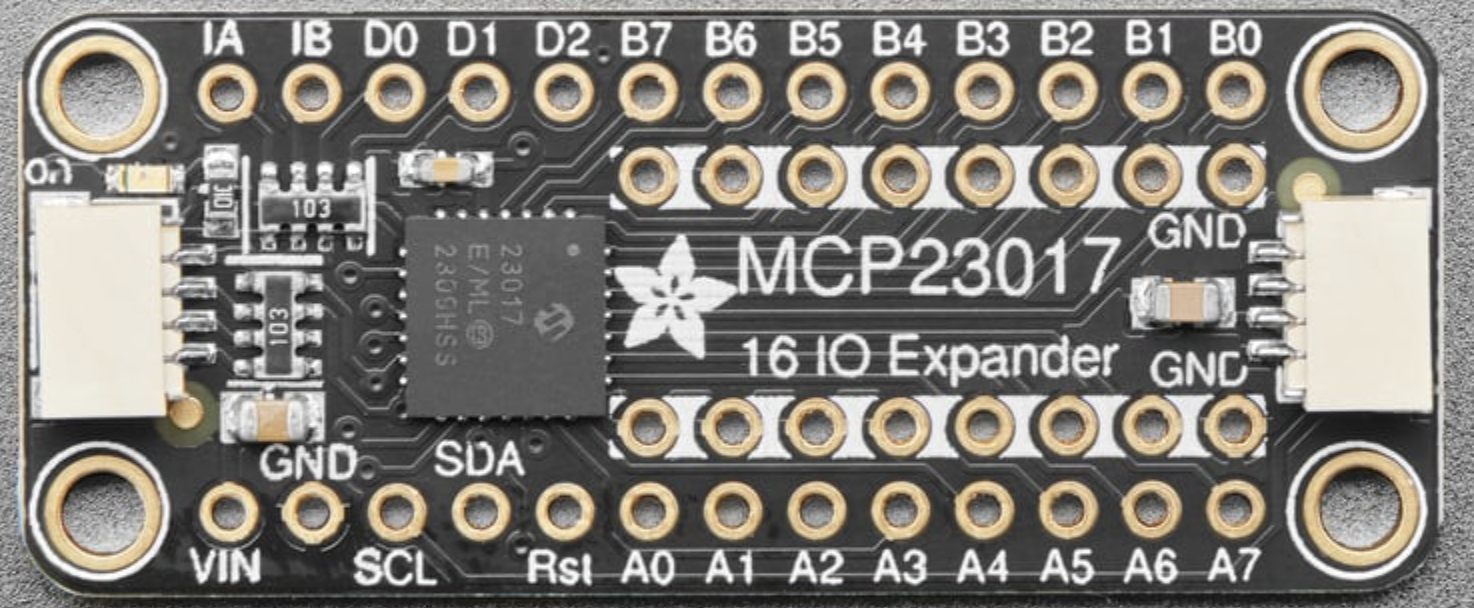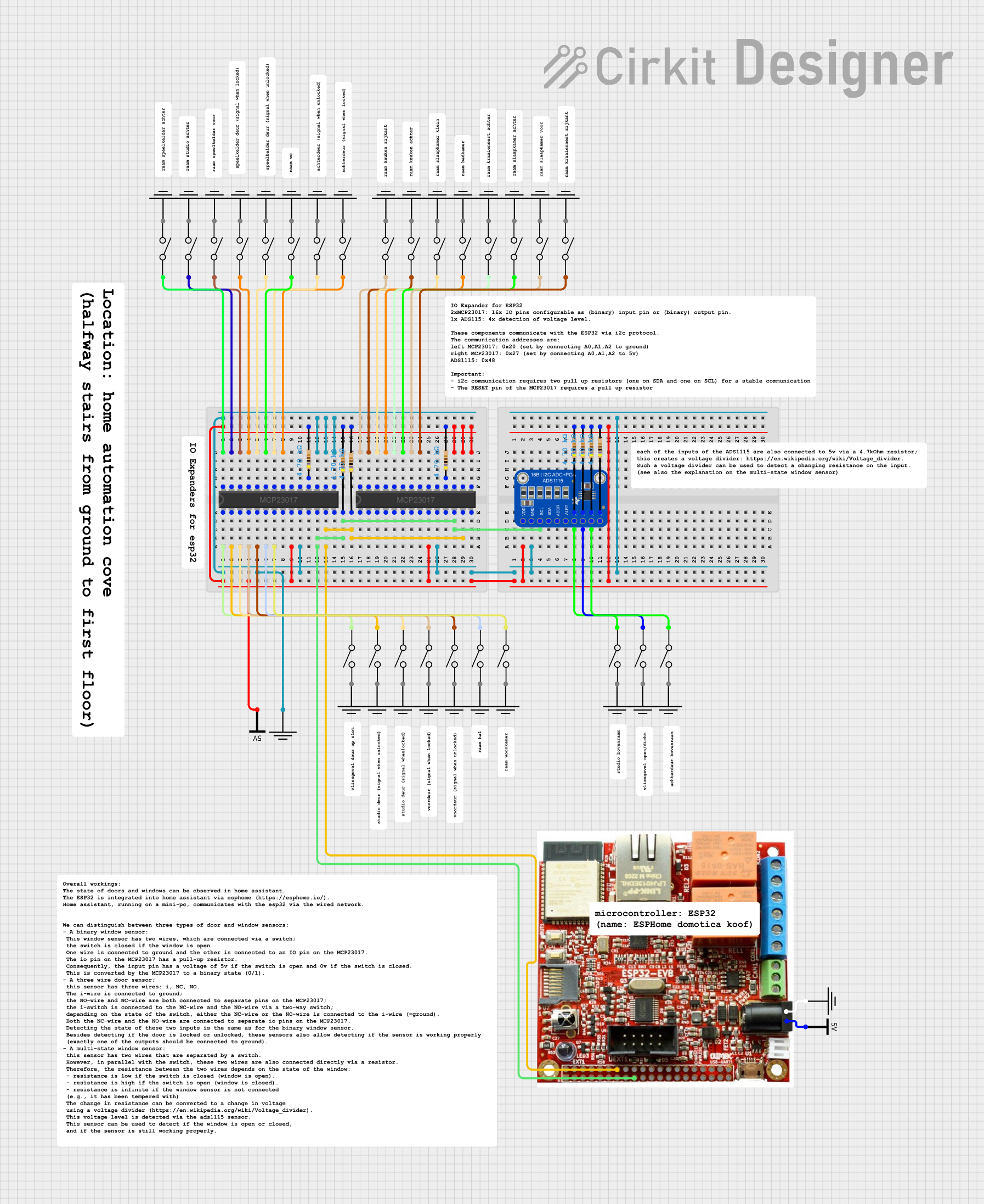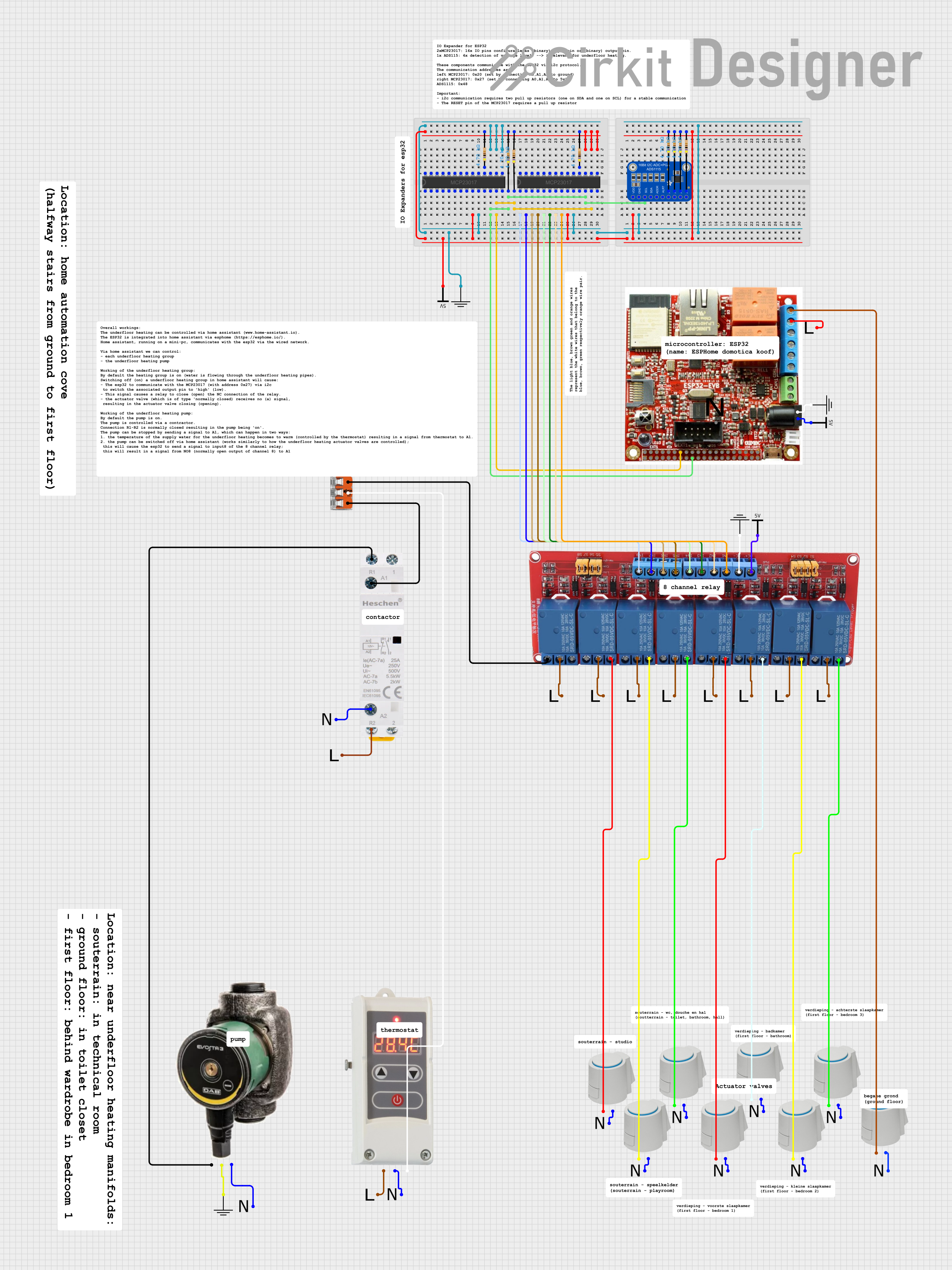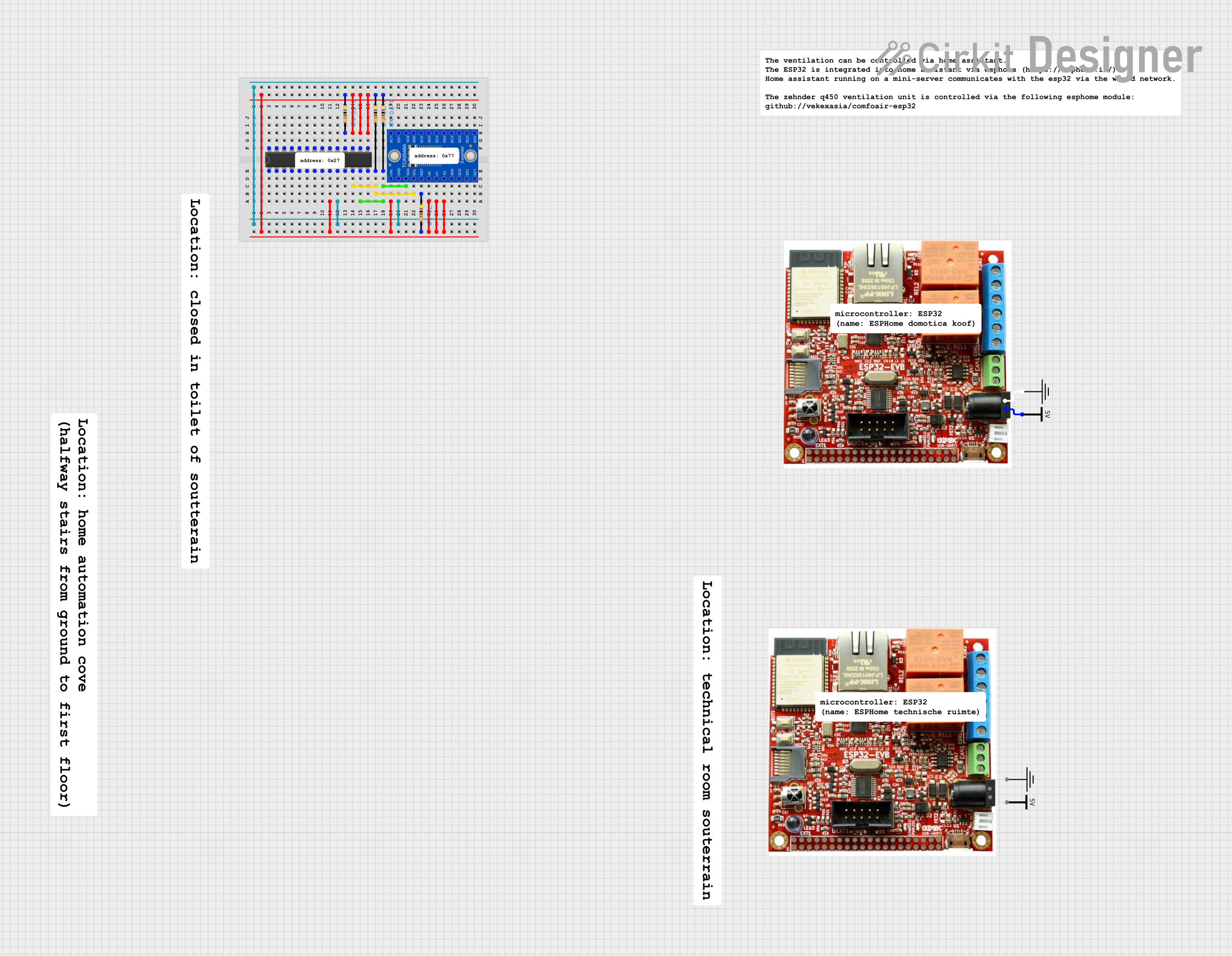
How to Use MCP23017: Examples, Pinouts, and Specs

 Design with MCP23017 in Cirkit Designer
Design with MCP23017 in Cirkit DesignerIntroduction
The MCP23017 is a 16-bit I/O expander with serial interface provided by Microchip Technology Inc. It offers an easy way to add additional general-purpose input/output (GPIO) pins to a microcontroller via the I2C bus. This component is particularly useful in applications where additional I/Os are needed, such as in button matrices, LED control, or when interfacing with multiple sensors that do not have a digital interface.
Common applications include:
- Expanding the number of I/Os in microcontroller-based projects
- Home automation systems
- Industrial control systems
- Prototyping and hobbyist projects
Explore Projects Built with MCP23017

 Open Project in Cirkit Designer
Open Project in Cirkit Designer
 Open Project in Cirkit Designer
Open Project in Cirkit Designer
 Open Project in Cirkit Designer
Open Project in Cirkit Designer
 Open Project in Cirkit Designer
Open Project in Cirkit DesignerExplore Projects Built with MCP23017

 Open Project in Cirkit Designer
Open Project in Cirkit Designer
 Open Project in Cirkit Designer
Open Project in Cirkit Designer
 Open Project in Cirkit Designer
Open Project in Cirkit Designer
 Open Project in Cirkit Designer
Open Project in Cirkit DesignerTechnical Specifications
Key Technical Details
- Operating Voltage: 1.8V to 5.5V
- I2C Interface
- 16 GPIO pins, configurable as input or output
- Interrupt output pins
- High-speed I2C interface (100 kHz, 400 kHz, 1.7 MHz)
- Three hardware address pins to allow up to eight devices on the bus
Pin Configuration and Descriptions
| Pin Number | Pin Name | Description |
|---|---|---|
| 1-2 | A0-A1 | Hardware address pins to configure the I2C address |
| 3 | A2 | Hardware address pin to configure the I2C address |
| 4 | VSS | Ground (0V) |
| 5 | SCL | Serial Clock Line for I2C |
| 6 | SDA | Serial Data Line for I2C |
| 7 | RESET | Active-low reset input |
| 8-9 | INTA-INTB | Interrupt output pins |
| 10-17 | GPA0-GPA7 | GPIO Port A pins |
| 18-25 | GPB0-GPB7 | GPIO Port B pins |
| 26 | VDD | Positive power supply |
Usage Instructions
Interfacing with a Microcontroller
- Connect VDD to the microcontroller's power supply (3.3V or 5V depending on the logic level).
- Connect VSS to the ground of the microcontroller.
- Connect SDA and SCL to the corresponding I2C pins on the microcontroller.
- Set the A0, A1, and A2 pins to the desired logic levels to set the I2C address.
- Connect the RESET pin to a digital output on the microcontroller if hardware reset functionality is required.
Programming the MCP23017
To use the MCP23017 with an Arduino UNO, you can use the Adafruit MCP23017 Arduino library. Here is a simple example to initialize the MCP23017 and set all pins to output:
#include <Wire.h>
#include <Adafruit_MCP23017.h>
// Create an MCP23017 object
Adafruit_MCP23017 mcp;
void setup() {
Wire.begin(); // Initialize I2C bus
mcp.begin(); // Initialize MCP23017 with default address 0x20
// Set all pins to output
for (int i = 0; i < 16; i++) {
mcp.pinMode(i, OUTPUT);
}
}
void loop() {
// Your code here to control the GPIO pins
}
Important Considerations and Best Practices
- Ensure that the power supply voltage matches the logic level of the microcontroller to avoid damage.
- Use pull-up resistors on the SDA and SCL lines if they are not provided on the microcontroller board.
- Avoid setting the same I2C address on multiple devices on the same bus.
- Use the interrupt pins to efficiently detect input changes without polling.
Troubleshooting and FAQs
Common Issues
- I2C Communication Failure: Check the wiring of SDA and SCL, ensure pull-up resistors are in place, and verify that there are no address conflicts on the I2C bus.
- Unexpected Resets: Ensure that the RESET pin is not floating and is connected properly if used.
- GPIO Pin Not Responding: Verify that the pin has been configured correctly as input or output.
Solutions and Tips for Troubleshooting
- Use I2C scanner code to confirm that the MCP23017 is detected on the I2C bus.
- Check the power supply and ground connections.
- Use a logic analyzer or oscilloscope to debug the I2C signal if necessary.
FAQs
Q: Can I use multiple MCP23017 devices on the same I2C bus? A: Yes, you can use up to 8 MCP23017 devices on the same I2C bus by configuring the A0, A1, and A2 pins to different addresses.
Q: What is the maximum I2C speed that MCP23017 supports? A: The MCP23017 supports I2C speeds up to 1.7 MHz.
Q: How do I use the interrupt feature of the MCP23017? A: Configure the interrupt control registers to define the interrupt condition for each pin, and connect the INTA or INTB pin to an interrupt-capable pin on your microcontroller.
This documentation provides a comprehensive guide to using the MCP23017 I/O expander. For more detailed information, refer to the MCP23017 datasheet provided by Microchip Technology Inc.